1. Introduction to Holi
What is Holi and Why is it Celebrated?
Holi, widely known as the Festival of Colors, is one of the most exuberant and cherished festivals in India and many other parts of the world. It heralds the arrival of spring, bringing with it the warmth of new beginnings and the triumph of good over evil. Celebrated on the full moon day of the Hindu month of Phalguna (March), it is marked by the vibrant splashing of colors, joyous music, and an air of unity and happiness.
The festival commences with Holika Dahan, an age-old ritual symbolizing devotion defeating negativity, inspired by the legend of Prahlad and Holika. The following day, Rangwali, is when people take to the streets, joyfully throwing Gulal (colored powder), spraying water, and immersing themselves in festive merriment. It transcends barriers, fostering forgiveness, togetherness, and renewal of bonds.
The Meaning Behind the Festival of Colors
Beyond its playful exterior, the festival carries deep cultural and spiritual essence. The bright hues signify love, joy, and rejuvenation, dissolving social differences and uniting people. The origins of playing with colors are traced to Lord Krishna and Radha, where Krishna, playfully mischievous, smeared color on Radha’s face, thus giving birth to this lively tradition.
It also marks the end of winter and the ushering in of agricultural prosperity, making it an essential celebration for farmers. From Lathmar in Barsana to Dol Jatra in Bengal, each region adds its unique touch to the festival’s grandeur.
2. The Mythological & Cultural Significance of Holi
The Legend of Holika and Prahlad
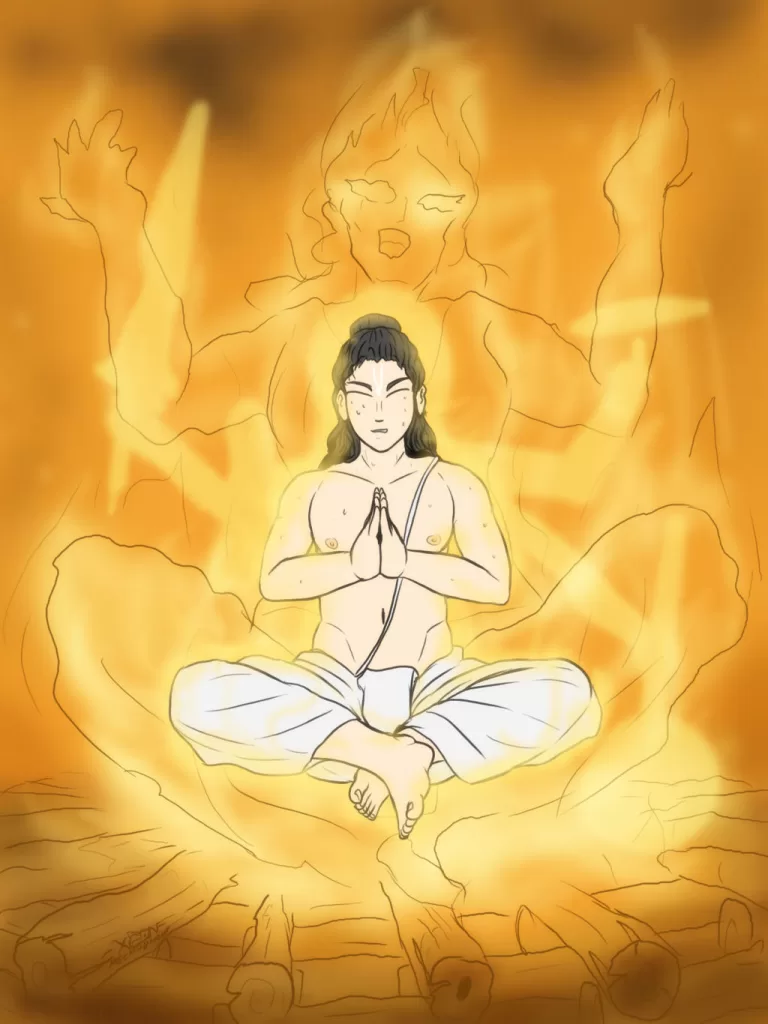
Among its numerous mythological connections, the story of Holika and Prahlad stands out. According to Hindu mythology, Hiranyakashipu, a mighty demon king, demanded absolute devotion. However, his son, Prahlad, was a devout follower of Lord Vishnu. In a bid to kill him, Hiranyakashipu enlisted his sister Holika, who possessed a magical cloak resistant to fire. She sat with Prahlad in a burning pyre, expecting him to perish. But divine justice prevailed—Holika burned to ashes, while Prahlad remained unharmed, proving that good always triumphs over evil. This legend is commemorated with Holika Dahan, where bonfires symbolize the burning away of negativity.
Radha-Krishna’s Love and the Tradition of Colors
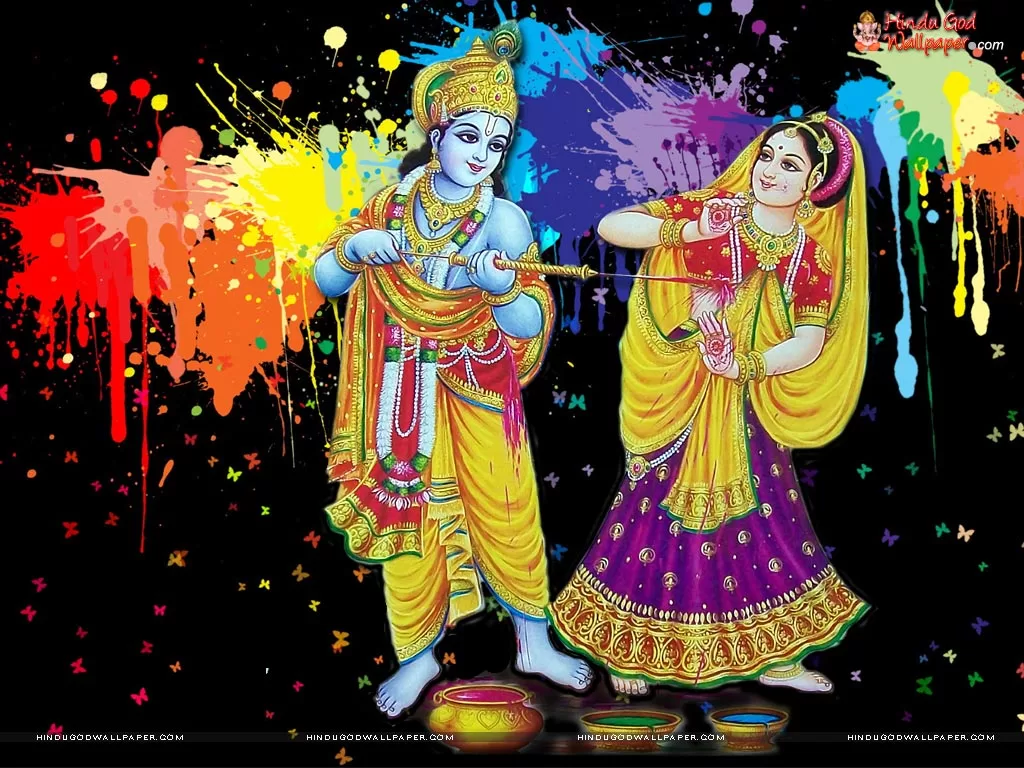
The vibrant color play originates from Lord Krishna and Radha’s love story. It is said that Krishna, who had a dark complexion, was self-conscious about Radha’s fair skin. His mother, Yashoda, suggested he color Radha’s face as a playful gesture, thus setting in motion the tradition of throwing colors.
To this day, Vrindavan and Mathura, where Krishna spent his childhood, host grand celebrations, attracting devotees from across the globe. The famous Phoolon Ki in Vrindavan involves the showering of flower petals, creating a mesmerizing sight.
Lord Shiva’s Irresistible Desire to Join Holi
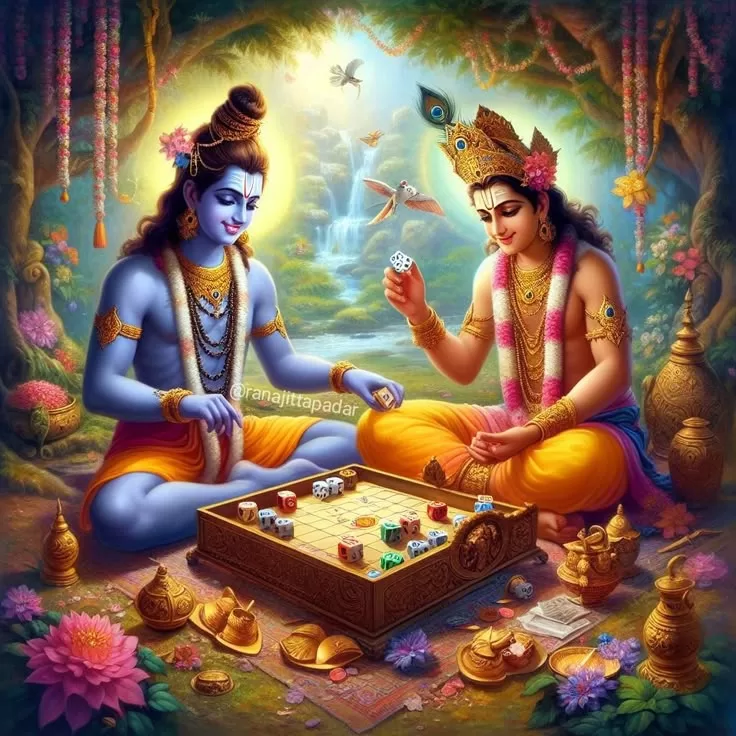
An interesting yet lesser-known legend speaks of Lord Shiva himself being drawn to the festival. As the ascetic god, Shiva was detached from worldly pleasures, but the infectious energy of the celebrations in Vrindavan was irresistible. Devotees believe that Shiva, along with Goddess Parvati, came down to play with Krishna and his followers. This unique tale highlights that even the most detached deity could not resist the unity, love, and joy.
3. How Holi is Celebrated?
Traditional Rituals of Holi
- Holika Dahan: On the eve of Holi, bonfires are lit, symbolizing the triumph of righteousness.
- Rangwali Holi: The next day, people engage in color play, drenching one another in hues of joy.
- Festive Feasting: Traditional delicacies like Gujiya, Thandai, and Malpua add sweetness to the celebrations.
Regional Variations of Holi in India
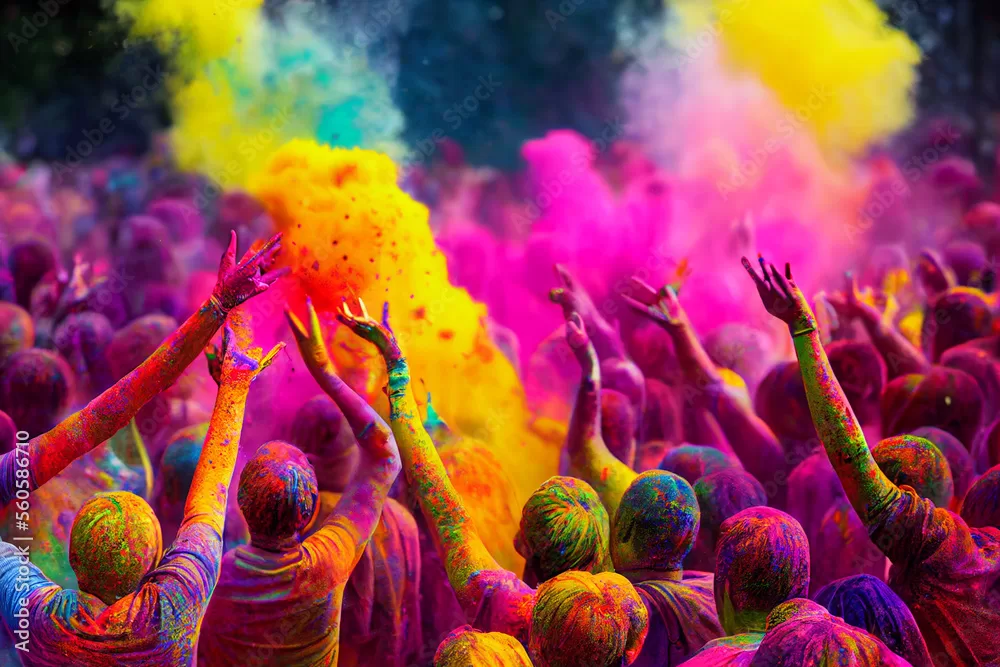
- Barsana & Nandgaon: Home to the famed Lathmar Holi, where women playfully beat men with sticks.
- Mathura & Vrindavan: Known for week-long celebrations, especially at Banke Bihari Temple.
- West Bengal: Dol Jatra features cultural processions, devotional songs, and Krishna worship.
- Rajasthan: The land of royalty celebrates Holi with elephant processions and traditional folk dances.
4. The Social and Spiritual Impact of Holi
Holi as a Festival of Unity
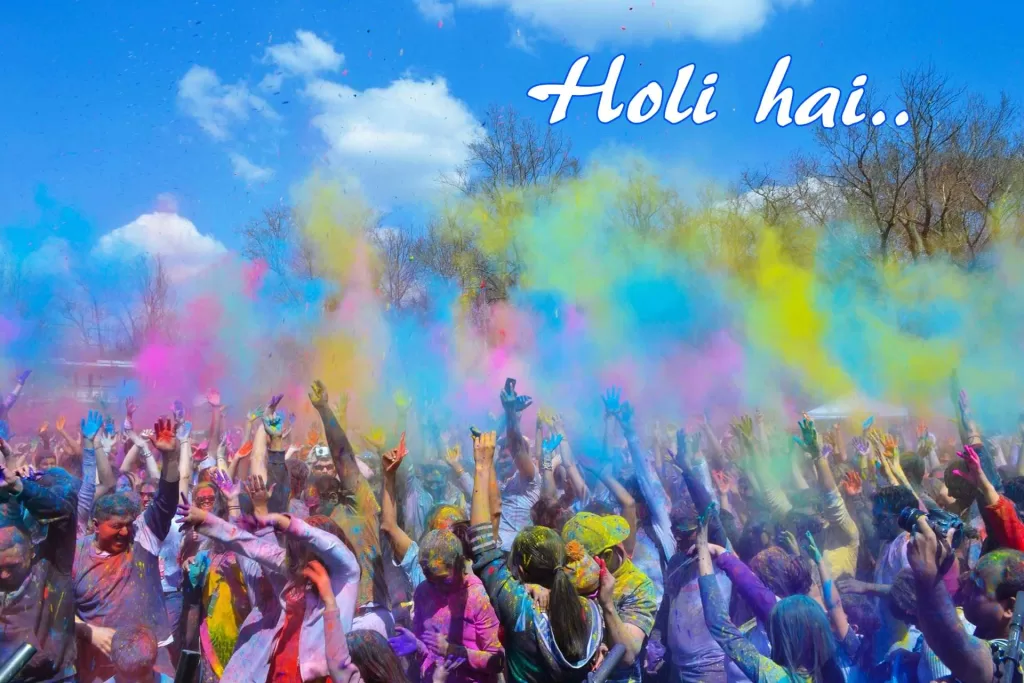
Holi dissolves caste, religion, and societal hierarchies, fostering an environment of brotherhood and friendship. The application of Gulal symbolizes equality, emphasizing that everyone is the same under the colors of joy.
Victory of Good Over Evil
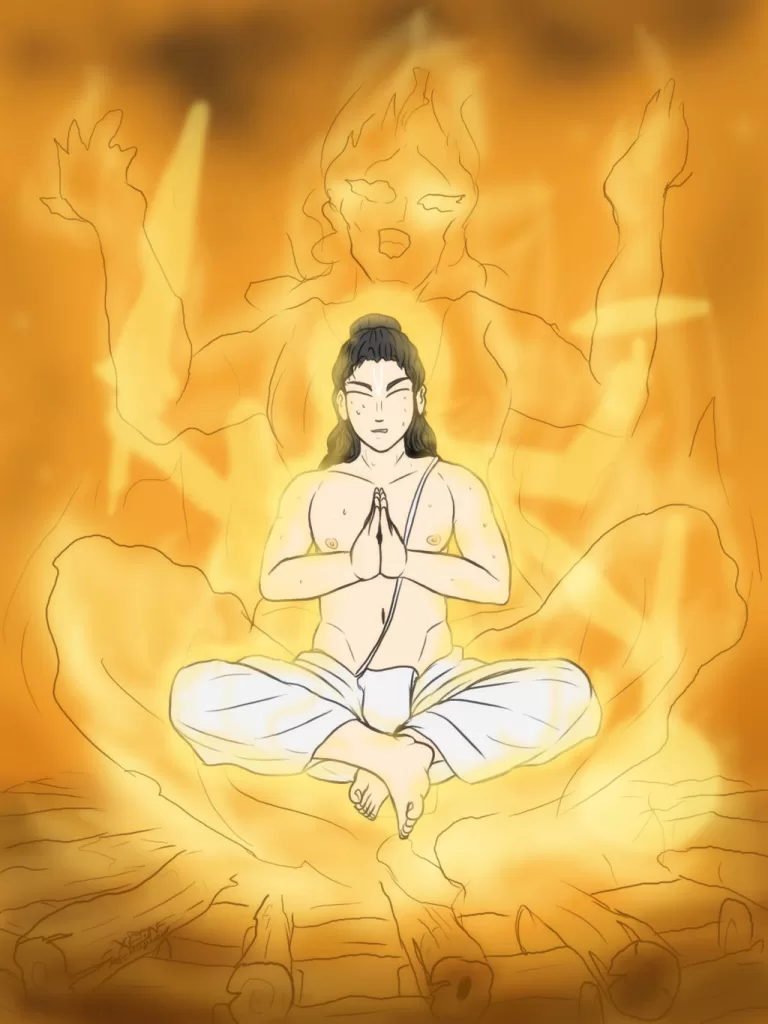
Holi reinforces the idea that righteousness always prevails, as seen in the legend of Prahlad and Holika. The ritual of Holika Dahan serves as a reminder to purge negativity and embrace positivity.
Music and Dance in Holi
Holi’s vibrance is incomplete without music and dance. Traditional dhol beats, folk songs, and Bollywood Holi tracks create an atmosphere of unrestrained festivity.
5. Eco-Friendly and Safe Holi Celebrations
Tips for a Safe and Sustainable Holi
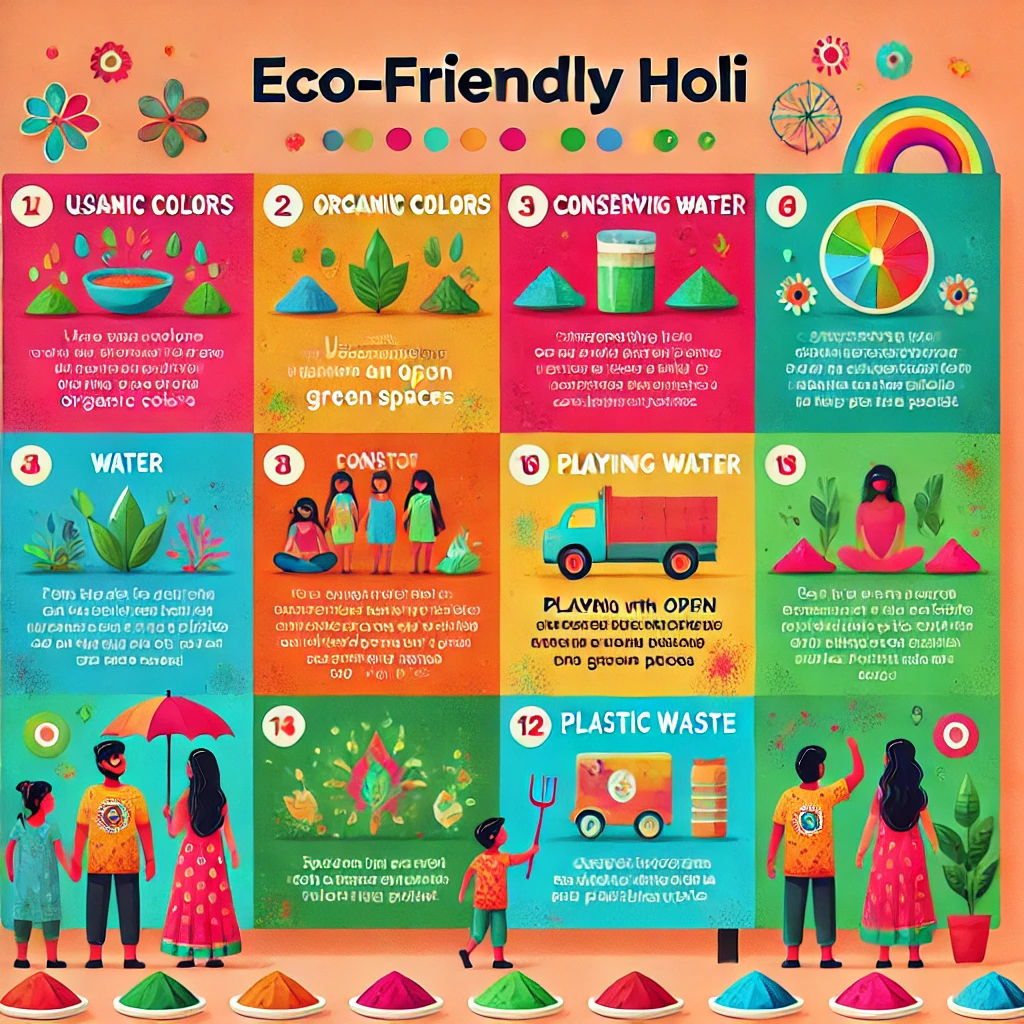
- Use herbal and organic colors to avoid skin damage.
- Limit water wastage and avoid plastic balloons.
- Celebrate with biodegradable floral colors.
How to Protect Skin & Hair
- Apply coconut/mustard oil before playing.
- Wear full-sleeved clothes and sunglasses.
- Wash off colors using mild shampoos and cleansers.
6. Conclusion: The Essence of Holi
Why Holi is More Than Just a Festival of Colors
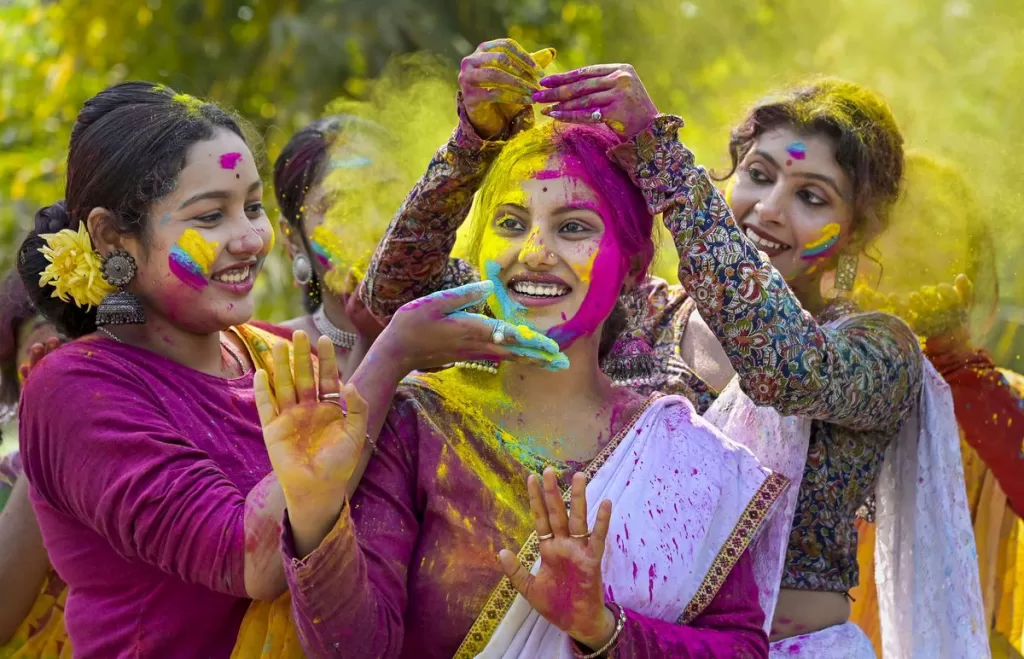
It is more than a day of revelry—it is a cultural and spiritual phenomenon. Rooted in Hindu mythology, it teaches the values of love, unity, and righteousness. Inspired by Radha and Krishna’s divine play, it encourages people to embrace joy and abandon social barriers.
Making Your Holi More Meaningful
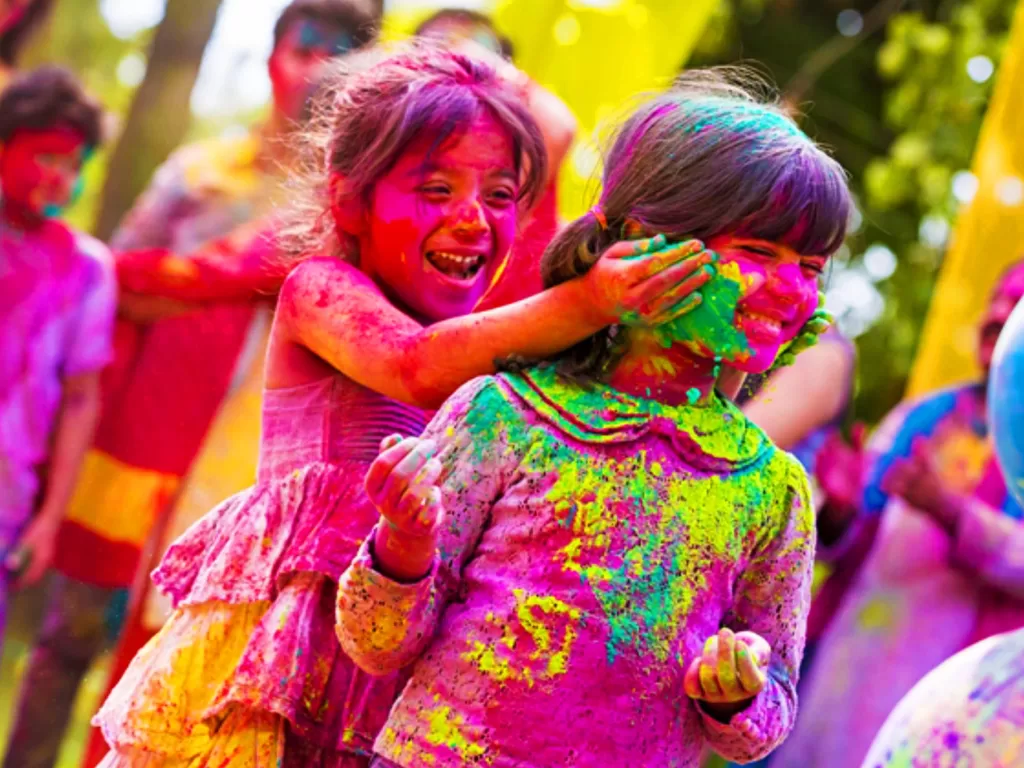
- Celebrate responsibly by using eco-friendly colors.
- Share happiness by distributing sweets to the underprivileged.
- Participate in traditional rituals to honor the festival’s true spirit.
It is a celebration of love, laughter, and new beginnings. Whether celebrated in Vrindavan’s temples, Rajasthan’s royal courts, or in the heart of urban India, its essence remains universal—spreading joy, harmony, and positivity. So, let the colors paint your life with happiness, unity, and prosperity!Happy celebrations!

